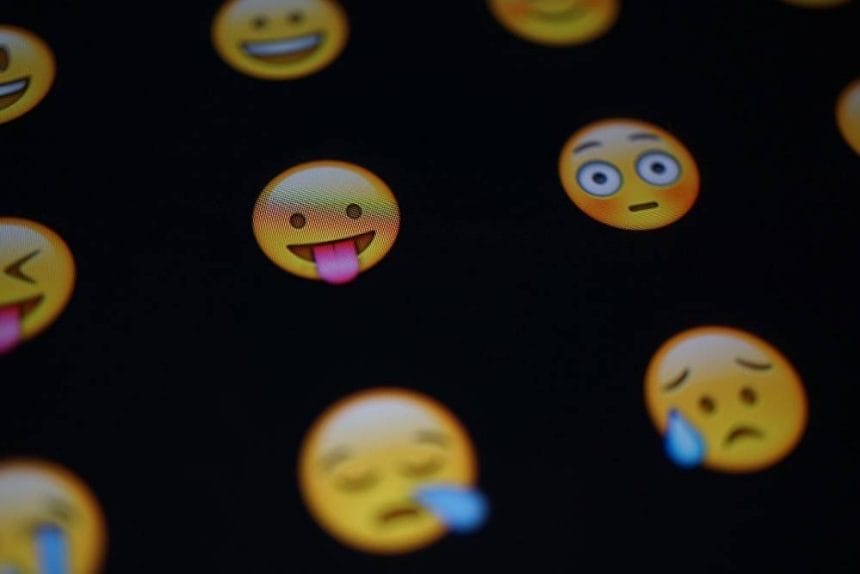Photo via Canva
Communicating has never been easier. We now have the ability to exchange information through our computers, tablets, phones and even our watches. This allows us to do business anytime, anywhere with ease. With texting becoming the norm, even in the business world, have we gotten lazy? What is acceptable in the workplace? I often find myself adding a smiley face or lol to my emails. A study conducted by researchers at Ben-Gurion University of the Negev in Israel in 2017, however, found that smileys in work-related emails could actually decrease perceptions of competence. Does that hold true here in Fargo? We asked various members of the Fargo business community how they feel when they see emojis and acronyms to learn more about business etiquette in the modern workplace.
FI: Under what instances would you absolutely not use acronyms, shorthand, and/or emojis?
Natalie Gruchow, SHRM-CP, Veterinary Practice Manager: In any professional uncomfortable situation. I think it can come across as disrespectful if used in the wrong situations. When in doubt, don’t use it.
Courtney, Insurance Underwriter: I don’t use acronyms, shorthand or emojis with people I do not know well or with people who I report to or who report to me.
FI: Whom would you use shorthand and emojis with?
Tyler Fischbach, Marketing: All coworkers and people I know. But I have to be CERTAIN they will understand it. I maybe won’t send a gif of someone doing ‘the floss’ dance to a 65 year old colleague.
Christen Anderson, Interior Decorator: I like to use emojis with clients when I feel it fits their communication style. After a few engagements, I get a feel for that or I’ll notice that they utilize emojis as well in their communications.
FI: Have you seen an increase in the use of shorthand and emojis?
Tyler Fischbach, Marketing: Absolutely, I have had entirely gif based convos with our president/CEO.
Christen Anderson, Interior Decorator: Emoji use has definitely increased. I think this is partially due to the amount of social media engagements people are having day to day so it’s naturally bleeding into their other communication channels.
FI: In a recent study, researchers found that the use of the smiley face or similar emojis did not increase positive reactions, but actually left a perception of incompetence. Have you found this to be true? What is your reaction when you see an email riddled with emojis and shorthand acronyms?
Brianne Hoffman, Communication Specialist: I feel like when I instant message, I use the smiley face because it’s very hard to instill a reaction through words. I don’t want anyone to misread my message or feel it comes across as abrasive. To me, the smiley face indicates it’s a friendly request or response.
Gina, Fitness studio owner/instructor: One or two emojis in an email doesn’t bother me, as I can appreciate the effort to communicate tone, which can help avoid misinterpretation. However, the use of shorthand in emails conveys lack of professionalism. In written communication outside of text messages, people should be taking the time to spell out words and phrases completely.
Cassie Meyhoff, Sales Manager: I like seeing smiley faces in texts or IM conversations. However, if someone uses too many emojis in email communication it can be perceived the wrong way or as unprofessional.
We asked you!
Do you use shorthand and emojis in the workplace?
- All the time!: 24%
- Sometimes: 71%
- Never: 5%
When do you start to use them?
- Initial Contact: 9%
- Established Relationship: 82%
- Neither: 9%
Do you feel warmer when you see a smiley in work communications?
- Yes: 71%
- No: 5%
- Doesn’t affect me: 24%
Advice from the experts
Carey Fry is the Workforce Center Manager at Job Service North Dakota. We asked her for some professional advice on how to navigate when and where it is okay to use emoticons in workplace communications.
Job Service North Dakota helps individuals search and apply for jobs, access current labor market information, and provides workshops, job fairs and other online and on-site services for those looking for employment. They also help businesses post jobs, search resumes and access training funds to assist in their recruiting efforts.
Fargo INC: Are emojis and acronyms okay to use at work?
Fry: Yes, depending on the situation and relationship. For example, if I am working on a project with a coworker that I know well and I am emailing the coworker about some aspect of the project that needs to go in a different direction, not because of anything negative, but because there is new information impacting the project, a smiley face emoji or thumbs up adds an “all is good” to the message. Acronyms are fine when emailing with those who know exactly what they are short for. We often work with long worded programs and shortening them in communications saves time. For example, The Jobs Opportunities and Basic Skills Program is “JOBS.” When communicating outside of the organization with others who are not familiar with the acronym, using the full title once followed by the acronym thereafter in each communication is standard.
FI: Have you seen an increase in the use of shorthand and emojis?
Fry: Yes, along with an increase in cell phone communication, which has opened workers up to a whole host of emojis easily accessed. When a coworker texts me that they will be a few minutes late, I can text back an “ok” sign or a “thumbs up” quickly. The same can be said about societal shorthand and abbreviations such as IDK – I don’t know; LOL – Laugh out Loud; BRB – Be right back. These are all much faster than spelling the message out. It seems that as we get busier and faster at work, at home and as the lines between work and home become more blurred, shorthand and emojis get used more. Additionally, communication is 55 percent non-verbal cues and 38 percent tone and quality of the speaker (aka. 7 percent is words spoken) therefore, emojis can help the listener better relay where the speaker is coming from.
Carey Fry’s Tips
- Use caution when using them with those you do not have a solid relationship with
- Do not use them when communicating something of a significantly negative or legal nature
- Context is important!








